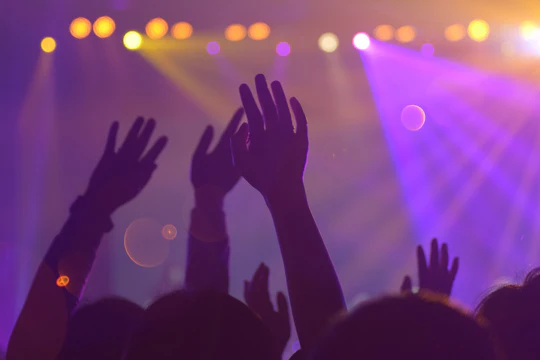Key takeaways
- Noise-induced hearing loss affects 26 million adults and 5.2 million children
- Hearing damage can happen through a single exposure to a very loud sound, or through exposure to loud noises over a period of time
- There is the possibility of hearing damage after exposure to sounds at 85 decibels for 8 hours or more without protection
- There’s a risk of hearing damage when exposed to sounds of 100 decibels for just 15 minutes without protection
- The best way to protect yourself from hearing damage is to use hearing protection like earmuffs or earplugs
Noise-induced hearing loss is a permanent problem resulting from long exposure to loud sounds.
It’s important to understand how many decibels can cause hearing loss, what decibel level everyday activities occur at, and how you can protect yourself from hearing damage. Let’s take a closer look.

Why is it important to understand the link between decibels and hearing damage?
Noise-induced hearing loss is common. It’s thought that hearing loss caused by noise affects around 5.2 million children between the ages of 6 and 19, and 26 million adults between the ages of 20 and 69.
That’s a lot of people who are affected by something that is often quite preventable. Noise-induced hearing loss can either be the result of a single loud sound, like a gunshot near the ear. More commonly, it’s the result of repeated exposure to loud noises over a long period of time.
The louder a sound is, the less amount of time it takes for it to cause hearing damage. Similarly, the longer you’re exposed to loud noises, especially when you’re not using hearing protection, the bigger the risk for hearing damage.
The National Institute for Occupational Safety and Health (NIOSH) specifies maximum daily noise allowances, in which the amount of safe exposure time is halved for every 3 decibel jump in exposure.
For example, the NIOSH suggests that you can be safely exposed to 85 db for 8 hours, but if the noise level increases to 88 db, then the safe time exposure drops to just 4 hours. So, be aware of not only how loud noises are but how long you’re in close proximity to them.
How is sound measured?
We measure sound in decibels (db). When we talk about decibels, it refers to the amount of sound energy in a confined space. The decibel scale is logarithmic, which is a way of measuring something that increases rapidly. That means that the loudness of a sound isn’t directly proportional to the intensity of a sound.
So, near silence is 0 db, but a sound that’s 10 db is 10 times louder than silence. A sound that’s 20 db is 100 times louder than near silence.
What decibel causes hearing damage?
Our hearing loss decibels chart breaks it down:

What activities can cause hearing damage?
But what do each of these decibel levels actually sound like? To ensure you’re able to adequately protect your hearing, it’s important to understand the decibel levels for different sounds.
0-30 decibel (dB), very faint
Hearing loss is unlikely to be caused by decibels at this level – but people with hearing damage might find it difficult to hear sounds at this level.
Everyday sounds at this level include things like:
- Normal breathing (10 db)
- A ticking watch (20 db)
- Leaves rustling (20 db)
- Soft whisper (30 db)
31-45 decibels, faint
In this range, sounds are audible, but you may have trouble discerning them from other sounds. Everyday sounds between 31 - 45 db include things like:
- The hum of a refrigerator (40 db)
- A quiet library (40 db)
46-64 db, average
If you’re walking down the street in a small, peaceful town, this is the decibel range of the sound you’d hear. Sound in this range is too soft to cause hearing damage. Sounds within this range include:
- Moderate rainfall (50 db)
- An air conditioner (60 db)
66-90 db, moderate
Sounds in this decibel range aren’t dangerous, but exposure to sounds over 85 db for a long period without protection could damage your hearing. Some examples of sounds within this range include:
- Normal conversation (65 db)
- A washing machine (70 db)
- A dishwasher (70 db)
- Heavy city traffic (85 db)
- A lawnmower (85 db)
- A noisy restaurant (88 db)
- Power tools (90 db)
- Hairdryer (90 db)
91-100 db, loud
Hearing damage can become a real issue at this level, so it’s important to protect your ears when exposed to sounds within this range. Any noise at this level or above might get you a noise complaint from your neighbors! Sounds within this range include:
- A loud car radio (91 db)
- A bar (94 db)
- Motorcycle (95 db)
- Concerts and festivals (87 db)
- Nightclubs (100 db)
- Approaching subway train (100 db)
- Crowd noise at a football game (100 db)
101-125 db, extremely loud
At 110 decibels and over, other sounds can’t be clearly heard any more. Sounds that fall within this very loud range include:
- Rock concerts (104 db)
- Shouting in the ear (110 db)
- Emergency sirens (120 db)
126+ db, painful
At this range, noise can actually become painful. Sounds at this incredibly high range include:
- A jet plane taking off (140 db)
- Fireworks (140-150 db)
How to know if sound is at an acceptable level
Now you know the decibel level that can cause hearing damage, how can you make sure that you’re not unwittingly exposing yourself to hearing damage-inducing dbs?
The easiest way to keep on top of it is to use a sound level meter (SLM). There are plenty of free SLM apps you can download to your phone, which will measure the sound levels around you and can even predict your maximum daily allowable exposure to noise.
How to protect your hearing
When you expose yourself to sounds that are more than 85 decibels, you may be putting your hearing at risk. Often, we’re risking our hearing without even realizing it.
Even a single moment of exposure to an intense sound can cause noise-induced hearing loss – and continuous exposure to loud sounds over time is dangerous as well. So it’s important to ensure that you protect your ears when in noisy environments.
Awareness, prevention and early diagnosis are the keys to combating noise-induced hearing loss. A good place to start is by taking a hearing test. Online hearing tests can give a good indication of whether you have anything to be worried about, but they’re no replacement for a professional assessment and diagnosis.
Always speak to your healthcare provider if you’re worried about your hearing. Some of the symptoms of hearing damage include:
- Difficulty hearing people when they speak at a normal level
- Asking people to speak louder or repeat what they’ve said
- Hearing muffled sounds
- Difficulty hearing in loud places
- Sensitivity to certain sounds
Another common symptom of hearing loss is tinnitus, a neurological condition that causes ringing in your ears, when there’s no actual sound present. It’s often caused by exposure to loud noises, and you may have experienced it after a loud concert. For some people, it’s a temporary condition while for others, tinnitus is a lifelong condition.
So, to avoid tinnitus and other forms of noise-induced hearing loss, here are some ways that you can protect yourself.
Turn the sound down
If you’re listening to music or watching television, consider whether you really need to have it at full blast. Can you turn the volume down? It should be loud enough that you’re not straining to hear, but not so loud that you can’t hear anything else over the volume of your music or TV show. If you’re struggling to hear the TV, then consider putting the subtitles on.
This is a particularly important consideration when listening to music or podcasts through headphones or earbuds. A 2017 study found that 80% of people between the ages of 13 and 18 years old use headphones to listen to music for 1 to 3 hours per day. If they’re listening to music at full volume, that could pose a serious risk to their hearing.
Remember that it’s not just the volume of sound, but also the length of time that you’re exposed to it that puts you at risk of hearing damage. So consider turning the sound down and reducing your listening time to save your ears. Over the head headphones may also be safer for your ears than listening to music using earbuds.
Wear earplugs
If you’re heading to a concert, working in a noisy environment, or are going to a fireworks display, wear earplugs. Earplugs designed for events ensure that you can still enjoy the experience while protecting your hearing.
When you wear a pair of earplugs like Loop Experience, you’ll get up to 18 db of noise reduction – and a further 5 db of protection when you add a Loop Mute. But they don’t block sound completely. Instead, they’re designed to filter sounds, so the sound quality is as crisp and clear as ever, just at a reduced volume.
Protecting your hearing when you work in a loud environment, whether you’re a musician or a construction worker, is especially important. Pop your earplugs in, then do your thing, without worrying about damaging your hearing when you’re just trying to do your job.
Loop Earplugs
Loop Experience 2
Stay away from loud noises
Going to a concert? Don’t stand right by the speaker. Head instead to the back of the room, where it’s not as loud. You’ll have your earplugs in (of course) but staying away from the source of the noise will make it even less likely that you’ll damage your hearing.
It’s a similar story at sporting events. Don’t sit right in front of the marching band or the confetti cannon. Try to stay away from the loudest noises, and your ears will thank you later.
Limit exposure
If you can’t avoid loud noises, try to take regular breaks for them. Remember that it’s not just how loud a sound is, but how long you’re exposed to it for.
If you’re an avid plane spotter, for example, wear your earplugs and make sure you take a break in a quiet place every now and then to give your ears a rest from the loud sounds.
Live life, protected
The moral of the story? There are a lot of everyday sounds that have the potential to damage our hearing, but there are also lots of things that we can do to reduce the risk. There’s no need to stop listening to music and to stop going to festivals – we just need to be a bit more sensible about it! So, protect your ears, be aware of the signs and symptoms of hearing loss – and then get out there and live your life!

The Power of Sound: What Is A Decibel And How Is It Measured?
Unlock the secrets of sound and learn what a decibel is. Explore more measuring sound and its impact on our world

What To Look For In Noise Reduction Earplugs
Unlock expert tips for choosing the perfect noise-reduction earplugs! Discover key features to consider when choosing...

How to stop the ringing in your ears after clubbing
If you're looking for a way to prevent your ears from ringing after clubbing, read our tips on how to prevent this an...



















